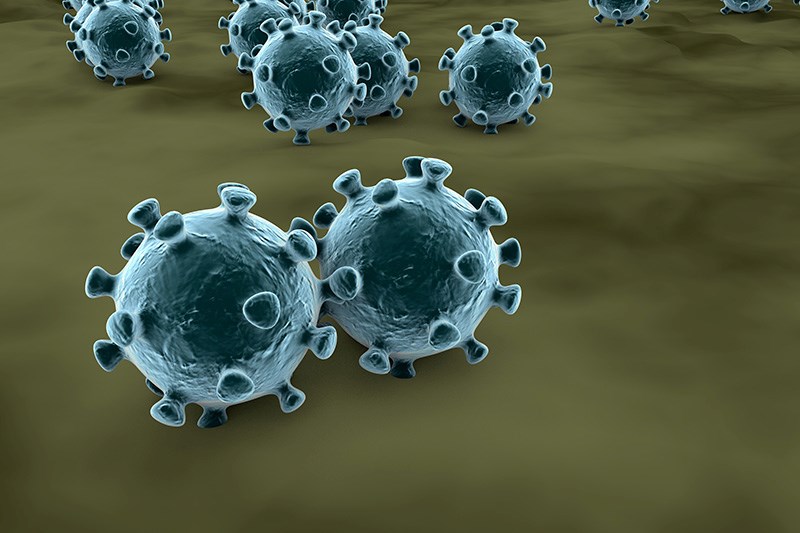REGINA — The Saskatchewan Ministry of Health released their biweekly community respiratory illness surveillance program (CRISP) report for March 2 covering the period Feb. 12 to Feb. 25, 2023, and these are five things you should know about it.
COVID-19, flu, RSV stable
Confirmed COVID-19 cases continue at approximately 200 cases per week and 6.5 per cent test positivity.
Respiratory Syncytial Virus (RSV) cases trended downward over the past four weeks; however, RSV test positivity remains high at 12.1 per cent. Cases among preschool aged children comprise over half of those detected.
Influenza activity in Saskatchewan increased this past week with the emergence of the first cases of Influenza type B, typically seen in the late influenza season (most often in March and April).
The majority of respiratory virus hospitalizations continue to be COVID-19, followed by RSV.
Sentinel indicators of respiratory transmission in the community fluctuates, as the season wanes;
Weekly visits to the Saskatchewan emergency departments for respiratory-like illness have decreased from 21.2 in the previous week to 13.3 per 1,000 this week.
Calls to 811 HealthLine for RLIs increased from 52.4 to 72.2 per 1,000.
No school absenteeism data is available for the most recent surveillance week as schools were not in session in that time period. School-illness absenteeism increased slightly over the last four reporting weeks. The data indicated 10.3 per cent of Saskatchewan students were absent in the week of Jan. 29 – Feb 4, which increased to 11.3 per cent in the week of Feb. 12- 18.
Wastewater levels fluctuate by provincial area. Prince Albert reported an increase from moderate to high. Regina's wastewater viral load remained the same at moderate-high. Saskatoon remained at moderate level. The trajectory is decreasing in North Battleford, Swift Current and Moose Jaw in the current week compared to the previous week.
COVID-19 test positivity goes up, deaths go down
COVID-19 test positivity in Saskatchewan was 6.6% in the most recent week, an increase from 6.1 per cent from Jan. 29 – Feb. 4. Cases are largely in the 20 to 64 years (42 per cent) and 65+ age groups (43 per cent).
COVID-19 outbreaks in high-risk settings fluctuated over the past four weeks. Eight outbreaks were reported in the past two weeks.
BQ.1.1 and its sublineages (denoted as BQ.1.1) are the most commonly detected variants (49.3 per cent of current reporting period), followed by XBB.1.5 (23.3 per cent) and BQ.1 (17.1 per cent).
COVID-19 hospitalizations have decreased from 153 to 122 for the most recent two weeks.
COVID-19 ICU admissions have increased from 9 to 11 for the most recent two weeks.
The proportion of staffed inpatient beds occupied by COVID-19 patients remained similar (from 5.7 per cent to 5.4 per cent this week compared to the previous week).
In the past two weeks, Feb. 12 - 25, there have been seven COVID-19 deaths, all in the 60 years or older group.
Influenza cases were down, but now are going up
Influenza cases were decreasing until the past week when type B activity emerged, typically seen in the latter part of an influenza season. Type B influenza generally has a mild clinical manifestation.
Influenza test positivity dropped from 2.1 per cent in the first week of January to 0.3 per cent in mid-February but increased again this week to one per cent with the emergence of type B activity but remains below the two per cent threshold for an influenza season.
Influenza occurred mainly among working-aged people 20-64 years (5 of 8 cases) in the past week.
One influenza outbreak in a high-risk setting was reported in the past month.
No influenza hospitalizations or ICU admissions reported during the week of February 12 to 25, 2023.
No deaths due to Influenza were reported in the past six weeks.
Influenza cases decreased each week from 32 in the first week of January to five cases this week.
Other Respiratory Viruses down
RSV detections decreased from 164 detections mid-January to 96 in the past week. RSV has the highest lab test positivity of the respiratory viruses (12.1 per cent).
RSV cases are largely in the pediatric age group – in the most recent surveillance week, 50 cases (56 per cent) were aged 0-4 years. A high volume of lab testing occurs in this age group which is greatly impacted by this respiratory infection.
RSV hospitalizations for the weeks of February 12 to 25, 2023 decreased by 25 per cent compared to the previous two weeks (from 100 to 75 admissions). RSV ICU admissions were 14 for the weeks of February 12 to 25, 2023 compared to 9 admissions for the previous two weeks. Children aged 0 – 19 years account for 72 per cent of RSV hospitalizations and ICU admissions over the past two weeks.
‘Other’ respiratory viruses remained stable between 101 and 82 detections over the past month. The positivity rate remained stable week over week and is 5.1 per cent this past week.
Outbreaks of ‘other’ viruses in high-risk settings varied between two and four outbreaks per week over the past four weeks.
The vaccine situation
Of those aged five years and older, 20 per cent have received their latest booster dose in the last six months. With the exception of Regina, all areas of the province have less than 50 per cent of their population up-to-date1 for COVID-19 vaccines.
Only 20 per cent of individuals aged 12+ years have received a bivalent booster dose (n = 213,308 doses).
Less than half of individuals aged 50+ have had more than one booster dose (47 per cent).
The influenza immunization campaign launched Oct. 11, 2022. As of Jan. 31, 2023, 27 per cent of the Saskatchewan population have received an influenza vaccine. This is a two percent increase from the previous reporting period. There is a 10 per cent decrease in doses administered compared to the same time last year.


